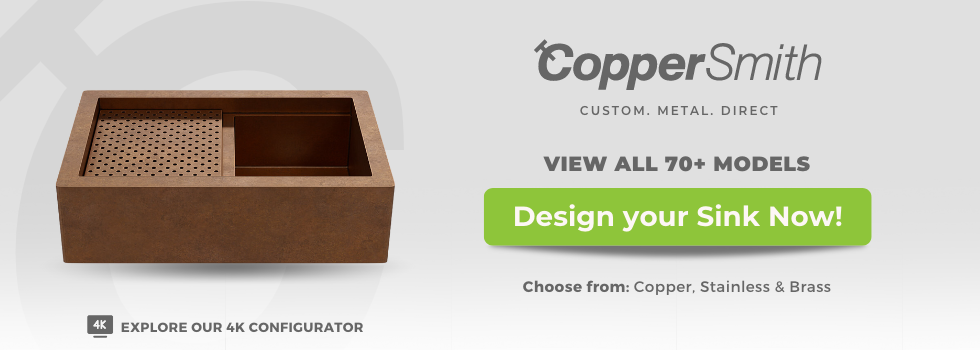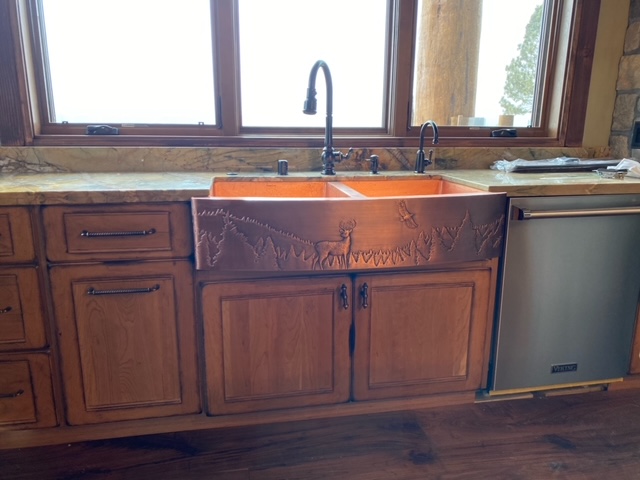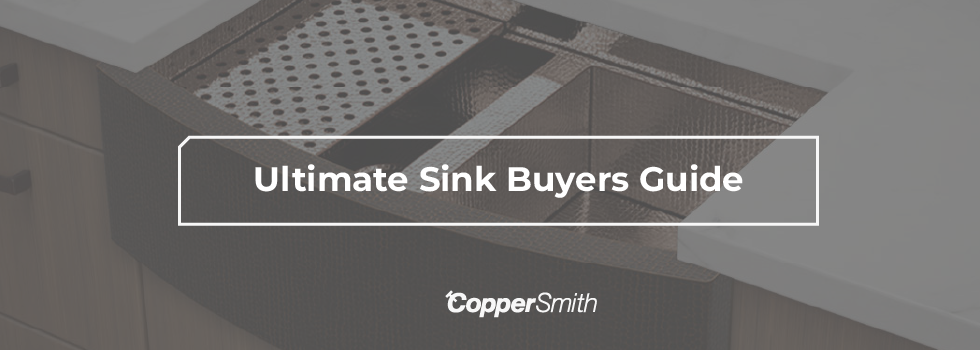
When upgrading a kitchen or bathroom, it’s natural to focus on foundational pieces like flooring, cabinetry, and countertops, leaving most of the more minor details for later. However, it’s important that you consider a sink early in the process for a couple of reasons.
First of all, the sink type you choose will impact the function of your space, and in a kitchen, bathroom, or other areas like the laundry room, the sink plays a major role in overall utility of the space. In addition, essential details like the size and placement of your sink affect other elements like the size of cabinets you choose. Plus, your sink selection will determine how contractors cut your countertop surfaces.
So, all of that being said, your sink choice needs to be front and center in your design process. Before you can choose the perfect sink for your needs, though, there are several features to consider. Here’s a comprehensive guide to picking the sink that’s just right for your practical needs and aesthetic preferences.
Sink Types
Utility is arguably the most critical factor to consider when choosing a sink. In design, form should always follow function.
When installing a sink, it must serve needs specific to a location. Whether you require separate spaces for soaking and rinsing dishware, your purposes include washing hands and brushing teeth, or you’re sick of using the bathtub for hand-washing bulky woolens, think about what you want and need out of your sink. Look carefully at the type of sink you intend to purchase and what uses it’s suitable for based on size, configuration, and other factors.
Residential/Commercial
First and foremost, you need to determine whether you want a residential or commercial sink. Homeowners who cook a lot or want to upgrade to a gourmet kitchen might appreciate a commercial product’s larger sizing and other benefits. However, you need to make sure you understand what you’re getting.
Many commercial products are designed for high volume but short duration. They may have undesirable features like larger or oddly placed drainage holes or specific accommodations for faucet types you might not want in a residential setting.
Some brands that manufacture both commercial and industrial products may offer crossover fixtures or options for retrofitting. Nonetheless, these are things you definitely need to look into before making a purchase.
Kitchen Sinks
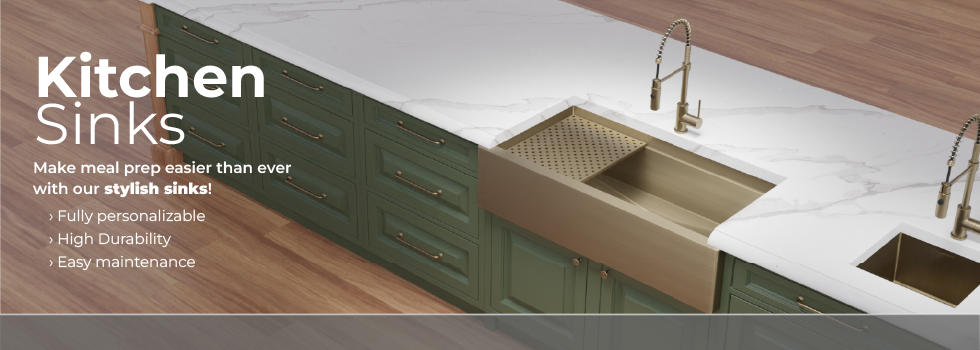
The sink is part of the kitchen triangle, associated with the critical functions of meal prep, cooking, and cleanup. For this reason, it needs to be large enough to manage the volume of dishes you regularly generate.
You’ll need to consider not only dimensions, including depth but also whether you want a single or double bowl or extras like a garbage disposal unit and workstation accessories. You should also decide whether you want a standard or custom sink setup.
Don’t forget about factors like durability and maintenance. The kitchen sink, in particular, gets a lot of use and abuse, and it needs to stand the test of time. It should also not add undue cleaning tasks to your average day.
Bathroom Sinks
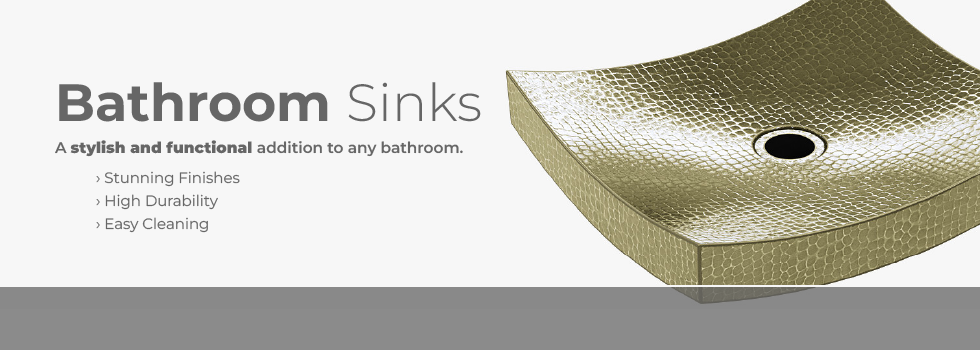
While you won’t soon be washing a stockpot or the family dog in your bathroom sink, it still needs to fulfill specific functions. It may be smaller and shallower, but it should be sized and placed to allow easy hand washing and perhaps personal hygiene activities like washing your face or brushing your teeth.
Generally speaking, this sink may offer greater potential for decorative appeal than, say, a kitchen or utility sink, as the intended function is much simpler. However, you will still want to make sure it delivers on needed utility, matches the stature and scope of your overall design, and aligns with your preferred level of cleaning and maintenance.
Bar Sinks
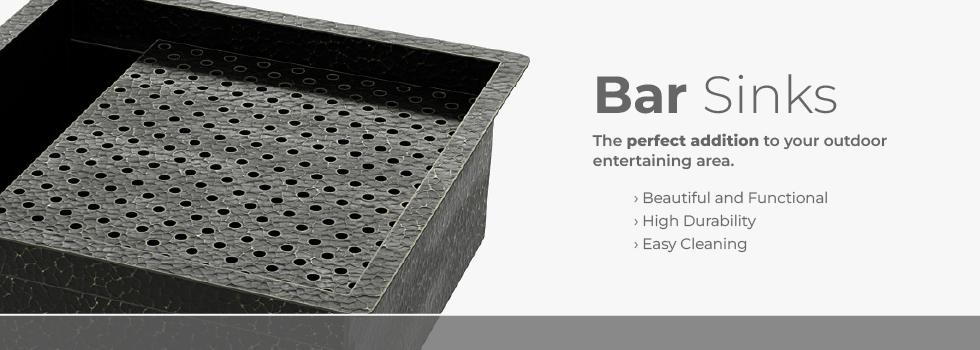
Bar sinks are rather specific in that they need to fulfill a similar function to a kitchen sink but fit in a smaller space. The good news is, you won’t have to wash pots and pans in your bar sink, but you will need it to be large and deep enough to handle minor food prep and rinse or wash glassware.
This sink style packs a lot of utility into a tiny space, mixing small stature with considerable capacity. Placement (indoor versus outdoor) may impact the size, style, and materials you choose, but adding this handy sink to your setup creates entertaining opportunities unique to having a wet bar.
Utility Sink
Not every home needs a utility sink, but once you have one, you’ll wonder how you ever got by without it. This high-capacity sink is ideal for a laundry room or wherever you have your washer and dryer (e.g., garage, mudroom, etc.).
The deep tub size and large capacity are ideal for hand washing—whether you’re dealing with intimates or wool sweaters. The size also comes in handy for soaking garments or linens beset by stains. It can also serve as a great option for bathing small pets if you don’t want to deal with animal hair in your bathtub or shower.
Mounting Method
Once you’ve considered the function you need your sink to perform, it’s time to think about how you prefer to mount it in your kitchen, bathroom, or other room in the home.
The method of mounting will not only impact the aesthetics of your space, but it will also affect usage and how easy or difficult it is to clean and maintain the area around the sink. There are a few different ways to mount your sink, depending on the style you choose, and each has benefits and potential disadvantages to consider.
Drop-In/Undermount
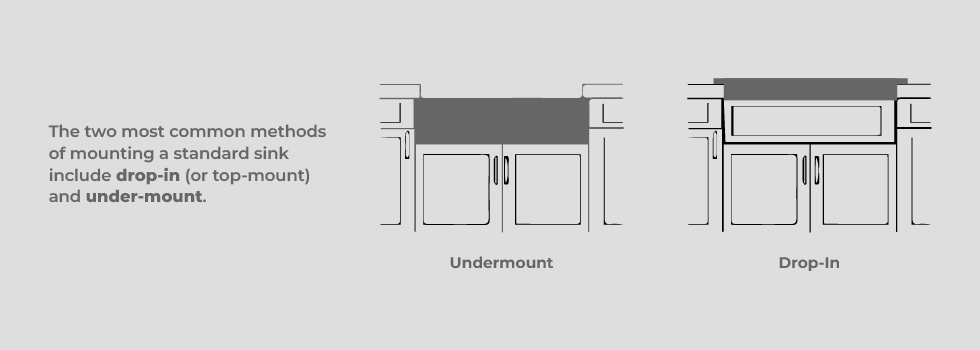
The two most common methods of mounting a standard sink include drop-in (or top-mount) and under-mount. Some sinks have a lip surrounding the upper edge of the basin to attach it to the countertop securely.
With the drop-in method, the lip sits on top of the counter surface and remains visible after mounting, while the bulk of the basin rests below the counter, hidden inside the cabinetry. Visually, this makes the sink slightly more prominent. Functionally, this method is unlikely to come loose and is easier to re-caulk, if necessary.
The lip may also serve to catch drips while washing hands or dishes, keeping them off the counter surface so that you don’t have to worry about water spots on your marble or granite countertops.
Undermount sinks, as you might imagine, have a lip that attaches to the underside of the counter so that the entire sink is inside the cabinet. This provides a clean, minimalist appeal and makes it incredibly easy to sweep water, food mess, and other countertop debris into the sink, unimpeded by the lip of a drop-in sink.
However, if your sink ever comes loose, you may need professional help to reattach it.
Vessel
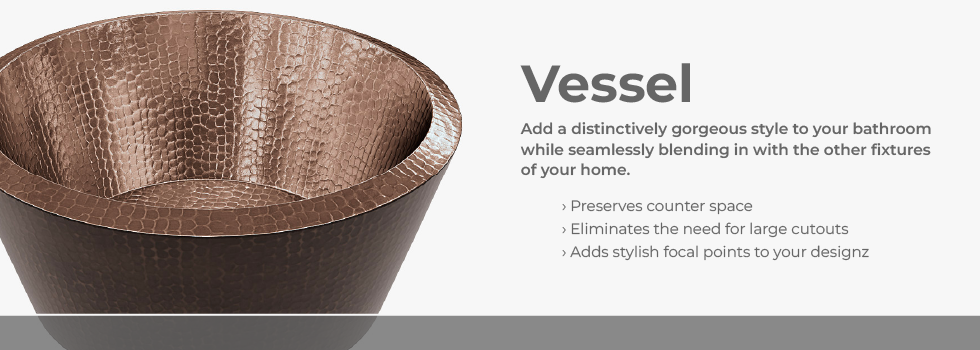
A vessel sink is one designed to sit on top of the counter, fully exposed to view. In some cases, it may look like a bowl, a shallow, rectangular vessel, or a plate turned up around the edges to funnel water toward a central drain. These sinks are most often found in the bathroom.
Regardless, this type of sink offers a couple of key advantages. It preserves counter space and eliminates the need for large cutouts, as only a hole large enough for the drainage pipe is required.
Because this style of sink isn’t attached the same way as a drop-in or under-mount sink, it can easily be swapped out to update your décor. Vessel sinks also act as stylish focal points in your design. However, they can lack overflow drains and be somewhat more challenging to clean around than, say, an under-mount sink.
Farmhouse Sinks
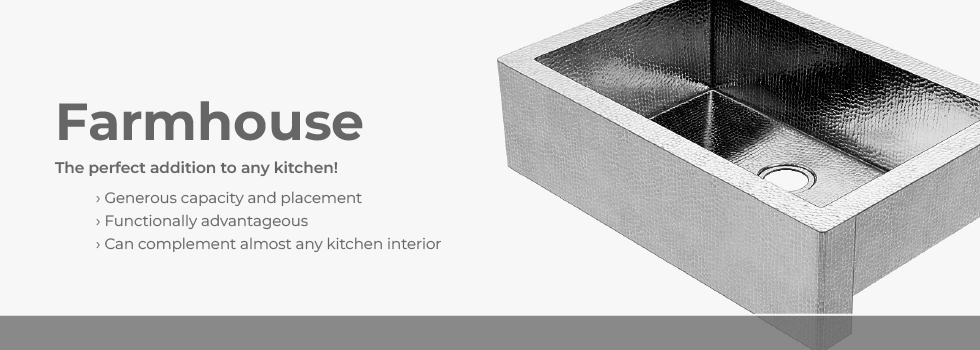
Also referred to as an apron sink, the farmhouse sink is known for its generous capacity and placement. This type of sink extends slightly beyond the cabinet and counter edge, with the front edge of the basin serving as the front of the counter and upper portion of the cabinet.
This style of sink is common in the country or rustic kitchen styles, but the size of the sink also makes it a popular addition to modern kitchens. While farmhouse sinks are functionally advantageous, as they make washing large dishes easy and allow you to stand right next to the front of the sink (avoiding the strain of reaching), they can splash water onto the floor if you’re not careful.
Sink Materials and Finishes
With basics like location, function, and mounting method nailed down, it’s time to have some fun choosing the material and finish of your sink. There is a wide range of options to consider, from classic white porcelain and enamel to resilient stainless steel or gorgeous copper. Which materials offer the greatest longevity? Which is going to elevate both the function and the aesthetic appeal of your kitchen or bathroom?
Porcelain
Being non-porous and easy to clean, porcelain is a popular choice for both kitchens and bathrooms. Porcelain sinks may be available in various colors to personalize your interior design, and this material is generally among the cheaper options for sinks.
However, there are a few potential downsides to porcelain because the material is susceptible to several common forms of damage. While porcelain is easy to clean, abrasive cleansers can scratch its surface, making it more liable to stain. Also, if you drop a heavy pot or pan, porcelain is likely to chip or crack. This will create an eyesore and require repair or possibly replacement if the structure’s integrity is compromised.
Cast Iron with Enamel
More robust than porcelain, enameled cast iron offers similar benefits but some of the same drawbacks. Both types of sinks are heavy, which means drop-in mounting is usually the best option.
While cast iron will stand up to all kinds of abuse, the enamel coating can chip, crack, and stain. However, it is easy to clean, and it can be repaired when chips and cracks occur. Significant surface scratching and staining will likely require refinishing to correct. If the cast iron is exposed to water, it can quickly begin to rust.
Acrylic Resin
You may be more familiar with this material by the brand name Corian. Formica is another type of acrylic resin solid surface used for countertops. In some cases, this type of sink is simply integrated into the counter surface of the same material. You can also find these sinks as separate basins.
The benefit of solid surface sinks is that they are non-porous, antimicrobial, and food safe. They are also lightweight and may be cheaper than some other sink materials. However, this surface can scratch and stain easily, and it doesn’t hold up well to heat (Corian is only heat resistant up to 212°F, for example). Solid surface materials also tend to have a dull, muted quality that doesn’t compare to the glossy shine of porcelain or enamel or the stunning patina of a copper sink.
Stone
If you don’t want to interrupt the flow of your gorgeous marble or granite countertops, a matching stone sink may appeal to you. You’ll gain all of the benefits of natural stone—extreme strength and durability, heat resistance, and of course, aesthetic appeal. It also adds a luxury element to your design.
However, there are some significant drawbacks to choosing a stone sink. For starters, it’s incredibly heavy and could require reinforcement. In addition, stone is porous, which means you’ll need to clean carefully and regularly reseal it to avoid damage. Stone is also among the most expensive options for countertop and sink materials.
Glass
Because glass is delicate, it’s really only suitable for use in bathrooms, and even then, it’s typically only used as an above-counter vessel sink. These sinks are easy to clean, but the reflective surface will show water spots much more than, say, porcelain, which could drive you nuts if you don’t have time to wipe it dry every time you use the faucet. Glass sinks may imbue your space with a unique personality, but they’re not terribly practical.
Stainless Steel

Stainless is one of the best modern sink options on the market for a few reasons. Not only is it incredibly strong and durable, but it’s non-porous and food safe, making it an excellent option for kitchen use, in particular. It’s also incredibly lightweight compared to other common sink types, so it works great for under-mount.
The look is contemporary and works with a wide range of interior design styles, and stainless is easy to clean and maintain. The only potential issue with stainless is that it can be noisy (as when dishes are dropped or water hits it), but this material offers a lot of appeal in terms of overall function and modern aesthetics.
Brass Sinks
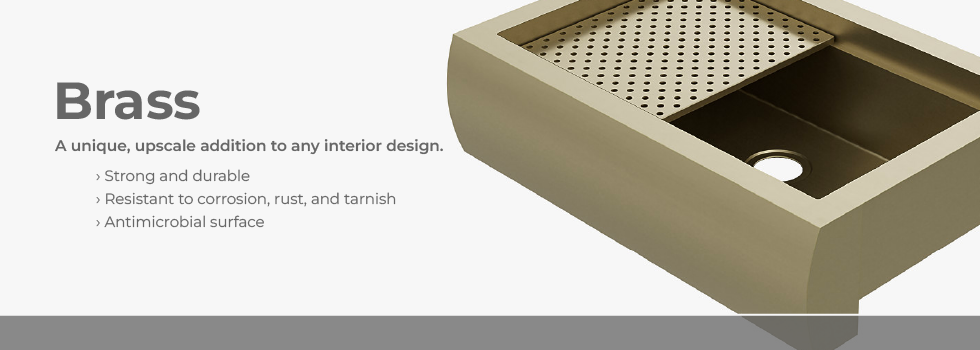
Brass may not be the cheapest material on the planet, but it’s a great choice if you’re looking for an attractive and functional sink. Brass offers strength and durability, as well as resistance to corrosion, rust, and tarnish. It’s also an antimicrobial surface, which you’re sure to appreciate in the kitchen and bathrooms alike.
While brass can dent with extreme impact, as with practically any material you choose, it won’t suffer the same chance of failure as a porcelain sink under the same circumstances. Finally, there are the aesthetics of brass, which serves as a unique, upscale addition to any interior design.
Copper Sinks
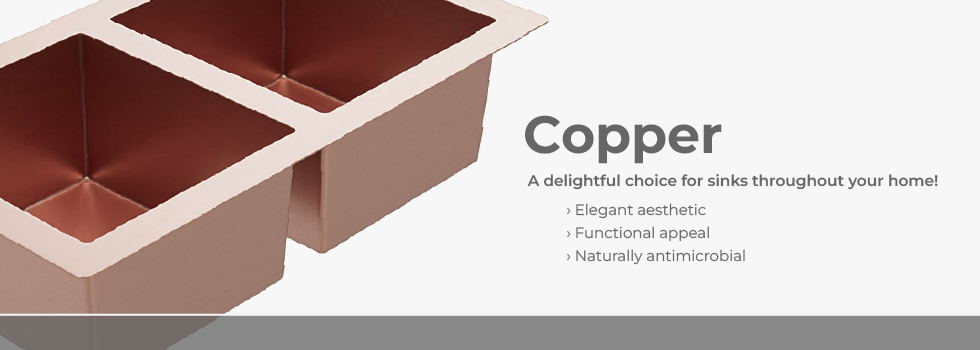
Gleaming copper has become a popular and delightful choice for sinks throughout the home due to its warm coloration, elegant aesthetic, and functional appeal. Whether you opt for a sleek, rosy finish, or a rich, bronzed hue with a hammered finish for added dimension and visual appeal, you can make your sink the star of your kitchen or bath when you choose a copper sink
It can be costly, but it doesn’t skimp on aesthetics or utility. Naturally antimicrobial, copper is said to kill 99.9% of bacteria, helping to keep your home clean and healthy. Copper delivers extraordinary longevity, and if you’re the eco-friendly type, you’ll be glad to hear it’s recyclable. Over time, it will develop a unique patina, making for a truly one-of-a-kind addition to your home.
Patina for Copper Sinks
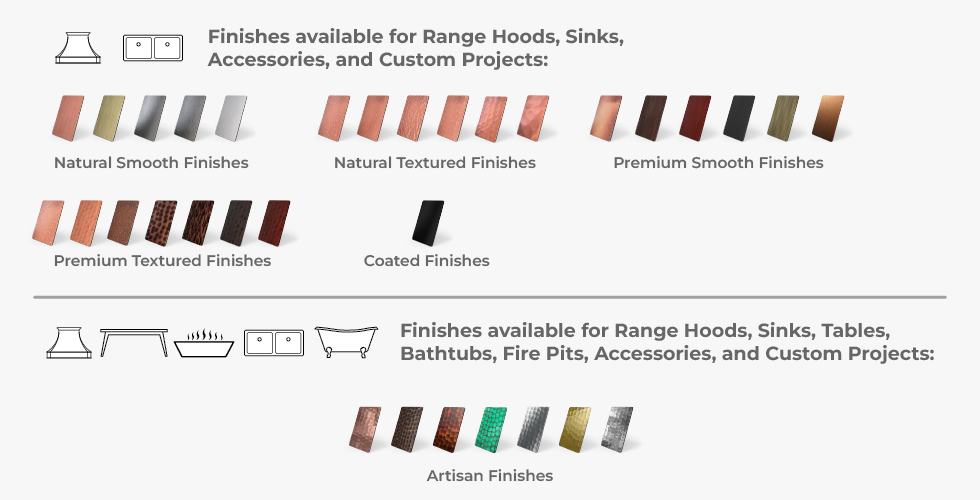
When you choose a metal sink, you have many options for a patina that can help create the custom look you desire. Perhaps you want your sink to display the shine of a new penny, or maybe you prefer the fiery appeal of lightly antiqued copper. You might be drawn to the rustic quality of a deep bronze finish or even the minty green of oxidation. There are literally dozens of hues to choose from, so you can find just the right shade.
Don’t forget that you can boost visual interest and add personality to your sink with the texture you select, as well. Several types of hammering (grain, hood, beehive, and more) produce distinctive patterns, or you can opt for the simple elegance of a smooth finish.
Sink Styles
The sink style you choose will depend on factors like location, available space, intended use, and to a degree, personal preference. There are several styles to consider.
Square/Rectangle
Square and rectangular sinks tend to offer the best use of space, the greatest capacity, and pleasing aesthetics within your design. These are perhaps the most common styles for kitchens, bathrooms, bars, and laundry rooms, typically offering the most utility and the best fit for rectangular counter surfaces. There are many standard sizes to choose from, or you can opt for custom sizing to better suit your needs, preferences, and available space.
Rounded
Rounded sinks are rarely found in kitchens, bars, or laundry areas, where optimizing utility is essential to convenience within a given space. Instead, this sink style is most often found in bathrooms, where you have more leeway to focus on form rather than function. Rounded sinks may be placed in square or rectangular countertops, but they are especially appealing when paired with curved counter designs.
Corner Sink
Depending on the configuration of your kitchen space, you may find that your cabinets simply don’t allow the space needed to install the double basin sink you prefer. In this case, you might consider a corner sink, which makes good use of often-wasted corner space with two basins aligned at right angles to one another.
The caveat here is that you’ll want to avoid placing this sink type on a counter seam, and seams are often hidden in the corners.
Custom Sinks
If you’re going to spend the time and money renovating a kitchen, bathroom, or other space in your home, it’s wise to get exactly what you want. After all, you’re the one who has to live with it, and you’ll regret compromising every time you look at an element that isn’t really your preference.
So, you don’t love the rounded or square ideas? This is where customization comes in. When you choose a custom sink, you have the opportunity to select everything from the width, depth, height, drain type, placement, color, texture, and finish. In short, you’ll get precisely what you want and enjoy a rush of delight every time you use it.
Workstation
If you want a large sink, but you don’t have a lot of available counter space, your sink might have to double as a workstation. Extra-large capacity (or custom sizing) and fitted accessories like cutting boards and drainboards add convenience and utility to your kitchen, helping you make the most of whatever space you have.
Single/Double Basin
It’s really up to you whether you want one large basin or two smaller ones. Because bathroom and bar sinks are typically smaller and utility sinks require a large soaking basin, they’re almost always of the single basin variety. Still, a double basin in the kitchen offers delineated spaces for soaking/washing and rinsing/drying dishes, improving functionality.
Sink Accessories
Finding the sink that fits your space, meshes with your overall design, and meets your personal needs and preferences can be a huge relief, but you’re not done quite yet. Next, you must choose the accessories that will help you enjoy the greatest function and convenience.
Drain Location
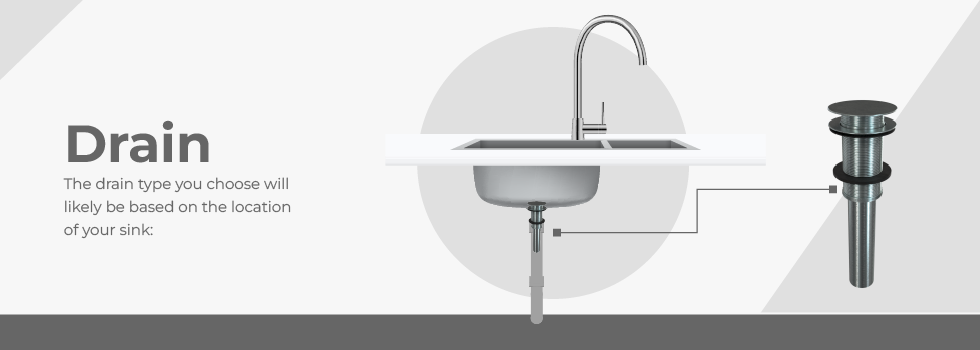
The drain type you choose will likely be based on the location of your sink. For example, a basket style is standard in the kitchen or bar area, where you’ll want to catch bulky food waste before it goes down the drain (unless you have a garbage disposal). On the other hand, a pop-up drain might work better for bathroom or utility sinks, where you may need to stop the drain to wash your face or soak linens.
Different types of Faucets
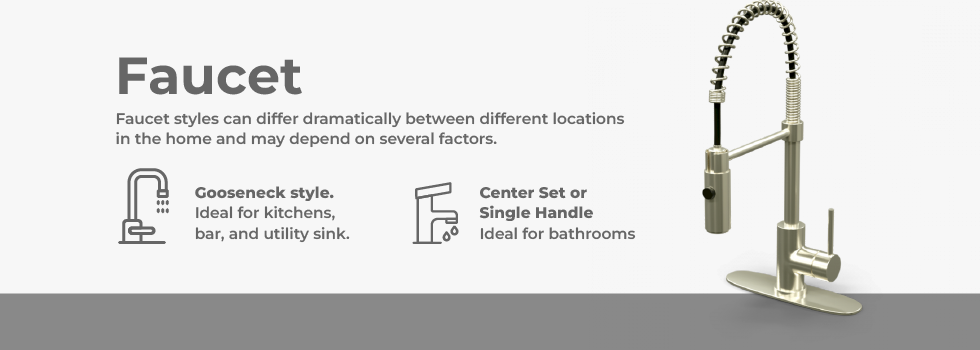
Faucet styles can differ dramatically between different locations in the home and may depend on several factors. Typically, a kitchen faucet is taller, allowing for large pots and pans to fit in the sink. Gooseneck styles are ideal, and there should be some swivel or pull-down functionality for ease of use. This style is less necessary but still appealing for a bar sink, and it’s a great option for utility sinks.
Bathroom faucets are another story. While you can choose from a wide range of styles, you simply don’t need the clearance of a gooseneck or the added utility of a swivel or pull-down spout. In fact, a larger faucet may impede the view in your bathroom mirror, making smaller, simpler faucet styles ideal.
Workstation Accessories
Whether you purchase a workstation sink or not, you may be able to add a range of workstation accessories to the mix. Fitted accessories like cutting boards and drain racks are intended for use with specific sinks designed to accommodate them. However, you can still place a drying rack in the bottom of the sink and find places for products like a silverware tray and sponge rack on a non-fitted fixture.
Selecting the Right Sink for Your Project
With so many styles and features to choose from, not to mention options for customization, choosing the right sinks for your home can start to feel overwhelming. The process is easier when you have a step-by-step plan to ensure your selection meets your practical needs and aesthetic preferences, elevating your overall design and delivering the day-to-day function you can’t live without.
Consider Location and Use
Where is your sink going, and what will you use it for? You could certainly put a kitchen sink in the bathroom if you want, but you’ll be wasting precious vanity space that you need for storing toiletries. Likewise, placing a utility sink in the kitchen will eat up space where you might prefer to store a trash can, recycle bin, or cleaning supplies, and choosing a bathroom sink wouldn’t be ideal for washing dishes.
Location and function are among the most important considerations for choosing a sink. Just because it looks nice doesn’t mean it will meet your practical needs, so nailing down the intended function should be step one in your selection process.
Take Measurements
You cannot complete a design process without accurate measurements of your space. Even if you haven’t fully fleshed out your kitchen or bathroom design, you likely have a general idea of where your sink will go. Remember, you’ll need to consider your plumbing and floor space.
Consider Existing Plumbing
You may be set on a new layout for your kitchen, bathroom, or laundry room, or maybe you’ve decided that only a commercial sink will suit your needs. Regardless, you need to consider the added cost of rearranging your plumbing. Whether you’re moving plumbing lines or changing the drain size, it will cost you, so it’s always wise to consider working with existing plumbing, which can impact the size and style of sink you choose.
Sink Budget
If you’ve set your overall budget, it’s time to break down costs and figure out how much you want to allocate to a new sink. Prices can range from just a couple hundred dollars to a couple thousand, depending on factors like material and finish, size and style, accessories, and more. Remember that skimping can have consequences down the line, but make sure to set a budget that works for you.
Sink Buyers Guide - Planning Your Dream Setup
Our team at CopperSmith understands the challenges that sink buyers face when they are trying to create a beautiful and appealing sink setup. There is more to sinks than meets the eye, and if you believe sinks can be a big part of your decor when you need to consider visualization tools. Indeed, creating your dream kitchen or bathroom setting, whether in a residential or commercial environment, requires careful planning. That is precisely where, at CopperSmith, we focus on the power of 3D rendering to make a big difference to your design. We leverage the 3D rendering technology for sink buyers to help in the creation of their dream sink setup. Here is how we help you make sense and bring your vision to life for a sink that steals the show.
3D Rendering - What is It for Sink Buyers?
Understanding the significance of 3D rendering in the context of a sink setup begins by defining precision what this technology involves. To put it in simple terms, 3D rendering is the process of creating a hyper-realistic 2D image using a 3D model. In the 3D visualization process, rendering is the final stage that helps create photorealistic models of objects within their environments.
The transition from three-dimensional to two-dimension visual or animation is made using a computer software tool. For sink buyers, 3D rendering enables them to see a simulation of what their dream sink would look like inside the room. This involves showcasing hyper-detailed aspects of the sink, such as:
- The texture of the sink, which is helpful when sink buyers hesitate between different sink materials.
- The space the sink will occupy inside the room, which can be crucial to figure out the best sink configuration for your taste and style.
- How the color of the sink will react to the lighting, and to different types of light throughout the day.
- How the sink completes the room decor, or how it integrates within the existing decor.
If you are in the process of remodeling a room with the installation of a new sink, this technology can ensure that you can make a more informed decision.
The Advantages of 3D Rendering for Sink Buyers
One of the primary benefits for sink buyers using our 3D rendering service is the ability to see what the sink would look like without needing to commit to purchasing. When you consider the cost of interior design and remodeling, the last thing sink buyers need is to waste money on a sink model that doesn’t work for their decor. Thankfully, 3D technology prevents such mishaps, making it a cost-effective strategy for sink buyers.
Additionally, this can also be a useful tool to convey your vision to installers and third parties involved in the process. An image will help not only visualize where you want the sink to be but also how you envisage its influence on the decor. This also means that you can rapidly consider new concepts if your installers make new recommendations or comments about the sink. Potential problems can be identified early and fixed before the installation day. So sink buyers can rest assured that 3D sink rendering will drive their vision forward and support their decor in every single way.
We believe that sink buyers can eliminate guesswork and delays in their dream sink setup with this technology. In fact, no sink purchase would be complete without quality rendering that acts as guidance for the next steps.
Custom Sink Buyers Need 3D Technology
At CopperSmith, we offer a vast range of sink models, providing options for different configurations, sizes, and materials, suited for all sink projects. So, if you want to explore the best design and finish options for your sink purchase and find the best backsplash for your space, we recommend comparing options at the time of planning your sink setup.
You can rely on realistic visualization to determine the best choice for the complete design. With turnaround time for 3D rendering and CAD drawings within days, it is easy to figure out the best setup that:
- Matches your style
- Fits within your budget
- Elevates your decor
- Meets all your criteria
- Is easy to install
This service allows sink buyers to truly develop their unique style and preference, creating a unique and tailored sink setup. Remember, this is your project. Realistic previews ensure your project can be 100% customized to your requirements, your taste, your finances, and your desired functionality. Our 3D rendering service eliminates the limitations of one-size-fits-all sinks. Sink buyers have a vast choice, and they can safely explore different setups until they find the right one. We also offer a free quote based on our 3D rendering visualization.
Installation Options
Whether you’re an intrepid DIY enthusiast or you’d rather leave construction to the professionals, there are a few things to consider before you choose your preferred method of installation. For example, if you want to do it yourself, the drop-in method is generally considered to be the easiest, although an above-counter vessel sink is also relatively simple to install.
If you’ve got your heart set on a sleek under-mount sink, you’ll likely want professional help. The same goes for options like farmhouse or corner sinks, where structural considerations can significantly impact the integrity of the installation and ongoing function and safety.
Sink Maintenance and Care
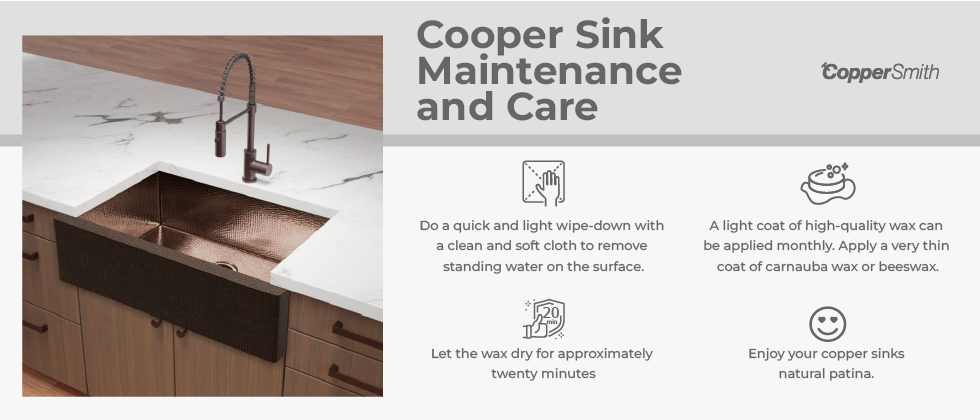
Cleaning and maintenance for your sink will depend not only on how you use it but also on the materials you choose and the level of mess you’re willing to live with. If you can’t abide water spots, but you want to minimize daily cleaning tasks, porcelain, enamel, or a solid surface will let you get away with some laziness. However, you won’t necessarily have the attractive and eye-catching sink you prefer, and you may face restrictions (heat) or potential repairs.
If you’re okay with a quick wipe-down on the regular, you can have the strength, durability, and visual appeal of polished stainless, brass, or copper you prefer. Or you could simply choose a texture that will help hide some amount of water spots.
There are ways to get a look you love without adding to your regular cleaning tasks. Keep in mind that mounting also makes a difference. Under-mount sinks offer the easiest countertop cleaning.
The sink is an essential part of every kitchen and bathroom space, and there are so many things to consider before choosing the sink that best suits your home, your practical needs, and your style. Whether you’re looking for a minimalist addition to your guest bath or you’re designing a gourmet kitchen, the right sink from CopperSmith can complete your space and create a home interior you absolutely love.
Sources:
https://www.thespruce.com/undermount-vs-drop-in-kitchen-sink-1821203
https://www.thespruce.com/vessel-sink-offers-some-unique-advantages-1821408
https://www.thespruce.com/basic-kitchen-sink-types-1821207
https://www.hunker.com/12003317/pros-cons-of-porcelain-sinks
https://www.bobvila.com/articles/best-kitchen-sink-materials/
https://homeguides.sfgate.com/heat-damage-corian-counters-84147.html
https://www.superpages.com/em/brass-sinks/


